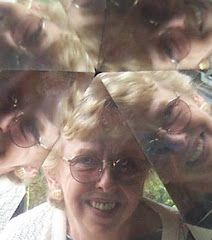 Remnants of the campground where the Nez Perce were ambushed by the army in 1877, at Big Hole National Battlefield in Southwestern Montana.
Remnants of the campground where the Nez Perce were ambushed by the army in 1877, at Big Hole National Battlefield in Southwestern Montana.

The road along the Big Hole River offers iconic views of Southwestern Montana, such as this one driving southwest.
ON THE ROAD: Southwestern Montana and Butte
One of the loveliest spots on God’s green earth is Western Montana. This is high country, beautiful beyond description, and it’s a wonderful place to RV.
We’ve been there a couple or so times, the last of which was last summer. This time we stayed at Fairmont Hot Springs RV Park just outside Anaconda and quickly accessible from the two freeways (90 and 15) that intersect just west of Butte, which is only a few short miles away. We pulled into a large, spacious RV park bordered on one side by the Fairmont Resort. Three sides were open pastures and behind the park were stables and horses. The resort is in a valley setting surrounded by snow covered peaks in late June, and who knows, maybe all summer?
As we had once before, we hopped in the car and headed for the Big Hole Crossing Restaurant in Wisdom, Montana because of their absolutely divine food. Hey, if there’s good food within hundreds of miles, we can sniff it out! To get there, we had to travel over a narrow, pothole riddled road that still had snow next to it (this was over a high mountain pass and is not suitable for RVers unless you’re into scary thrills).
After several long miles of bouncing and hanging on, we dropped into a valley on a road that traveled along the Big Hole River, which was running swiftly because of snow melt. When we reached the restaurant, the mosquitoes were so thick we couldn’t begin to beat them, so a few hundred made it in the door with us. No problem though. The waitress brought over a citronella candle and placed it on our table, which seemed to keep them somewhat at bay while we enjoyed the wonderful food and atmosphere.
Once before when we stayed outside Butte, we made the trip on to the Big Hole in the Bitterroot Valley, which is the spot that the U.S. Cavalry ambushed the just awakening village of Nez Perce Indians that had been fleeing, trying to make it to Canada and freedom after being forced from their beautiful homeland in Northwest Oregon and Eastern Idaho in 1877. This was not the Cavalry’s finest hour as, after massacring nearly 90 elderly, women and small children, the Nez Perce managed to sneak up the hillside and capture their cannon, and pinned down the Cavalry, allowing their women and children to escape.
That was only a part of a sad chapter in America’s history, as the Nez Perce managed to escape, but after dropping down into Yellowstone area and then turning north through Montana towards Canada, were finally ambushed again and their Chief, Joseph, finally surrendered at Bear Paw Battlefield, only about 50 miles from the border and uttered the immortal words, “from where the sun now stands, I will fight no more forever.”
Big Hole is a memorial to these brave, intelligent, peaceable souls who had helped Lewis and Clark survive when their party was near starvation and showed them the way to the Columbia River, then to the Pacific Ocean. The Nez Perce wanted desperately to continue to live in their own homeland and had trusted that the treaty they had signed would be honored forever, but the discovery of gold and consequently, the greed and rush of whites westward had wiped away the good intentions of the U.S. government. At the site of the ambush are triangular lodge pole skeletons where tipis would have stood during the ambush, and a few artifacts still lay scattered on the ground.
As we watched the film about the story of Big Hole, tears streamed down my cheeks thinking of the innocents who had perished on that spot. I had been to their homeland because it was where my family settled in 1878, so I knew what a magnificent land they had been forced to leave. This region holds much of the history of the West, and should not be missed if you’re in Western Montana. The drive to Big Hole is an easy ride by RV or car from Interstate 15, and that’s the way we headed back to Butte. RVs were parked by the Big Hole River all along the route to I-15.
As for the town of Butte, its history is in mining, and the setting of the town is really picturesque. It’s an old town, so many historical buildings remain along the streets in the historic district. There is a wonderful museum of mining history on the Montana Tech campus where you can view specimens of rocks and ore from the region and learn the story of Western Montana’s past. We spent a long time exploring this museum. There is also a museum of transportation, called Piccadilly Museum, but we didn’t visit it—not sure we even knew about it.
As for shopping, Butte is pretty much it in the area, but you won’t find many fast food places or car repair franchises. We had our car serviced in town at a tiny little garage that must have been there since the first automobile rolled down the street. There is a Super Walmart and a small shopping mall with a couple of major (though small) department stores. They’re all located along the same street in the flats, Harrison, on the south side of I-90, so are convenient no matter where you stay in the area.
A terrific farmer’s market (summer, only) takes place on Saturday morning in downtown (in this case, uptown, since it’s high up on a hill), and parking is available in lots or along the streets bisecting the market street. You’ll find fresh, Montana grown produce and flowering plants along with baked goods and crafts, and possibly fresh eggs from a local farmer’s chickens. The produce we purchased was exceptionally fresh and delicious.
Our Lady of the Rockies is a must see monument standing tall and white on top of a notch in a mountain above Butte, and is a landmark along I-90. A 2-1/2 hour bus trip takes you up for a close-up view of the 90-foot tall statue. Butte yearly activities include an annual Dinosaur Festival that takes place in June and a National Folk Festival in July, among others.
If you find that you have difficulty breathing, or simply tire easily, remember that at the Butte airport you are at 5549 feet, along the Continental Divide, and elevation only goes up from there. Those with heart problems should take precautions, and everyone else should start drinking lots of water as soon as they arrive to avoid altitude sickness.
I hear fishing for trout is fabulous along the Big Hole River, and many people rave about the Berkeley Pit Mine in Butte as an interesting site to see, if you're into those sorts of activities. All in all, the Western part of Montana is loaded with activities for all types of sports enthusiasts, including white water rafting, hunting, and hiking, and you won't find a prettier setting to pursue them in.


No comments:
Post a Comment